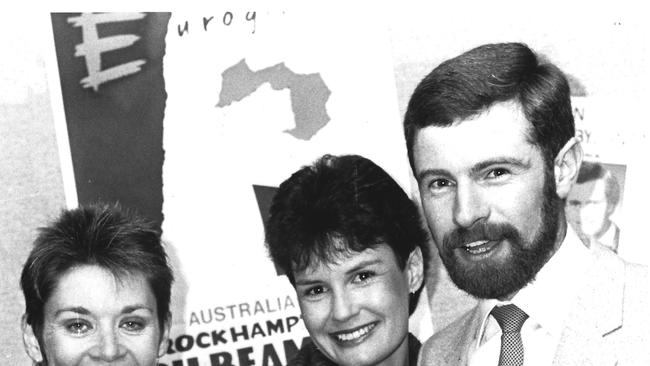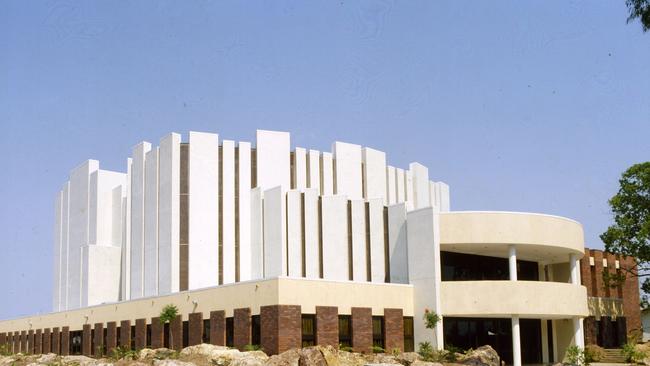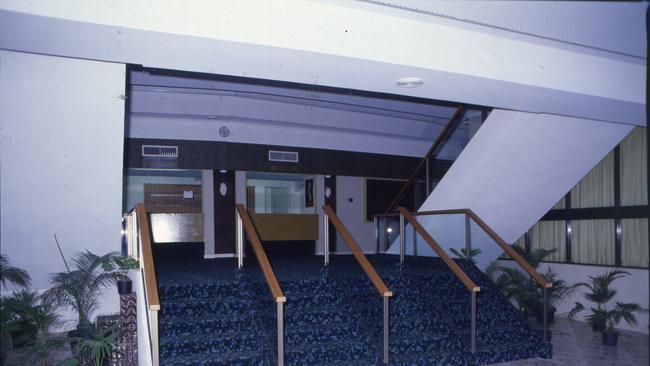First Rockhampton Pilbeam Theatre manager reflects on theatre’s impact
He was there on the opening night, and now Ian Satchwell reflects on his time as manager of Rockhampton’s Pilbeam Theatre and shares his beliefs on what its future should be.

Business
Don't miss out on the headlines from Business. Followed categories will be added to My News.
He was there at the beginning.
Now with the Rockhampton Pilbeam Theatre facing the end of its serviceable life and discussions underway on the future of the building, the theatre’s first manager, Ian Satchwell, reflects on his experience of the iconic venue.

“I was working at what was then Capricornia Institute of Advanced Education (later to become CQUniversity) and doing some part-time work announcing at the ABC, and at the university I was helping to organise events,” Mr Satchwell said.
“When the job got advertised shortly before the theatre opened, I got interviewed, including by the then mayor, the very colourful Rex Pilbeam, and was delighted to be appointed to the role as first manager of the theatre in 1979.
“It was a very steep learning curve but the theatre with the support of the council and the community and all of the staff and volunteers, the theatre was a huge success.”
According to Mr Satchwell, in the first year more than 80,000 people visited the theatre out of a then population of roughly 55,000 in Rockhampton and the surrounding areas.

“That tells you how strong the support of the community was,” he said.
The Pilbeam Theatre become one of a network of theatres constructed about the same time along the Queensland coast and according to Mr Satchwell that enabled the theatre along with theatres in Townsville and Cairns to host touring shows as well as cater to local performing arts activities and business conferences.
Mr Satchwell still remembers the first night on June 6, 1979.
“I hadn’t taken up my position when the theatre opened, the on-duty manager was Colin Hamilton, I was there as were so many community volunteers, to show people to their seats and the theatre was packed,” he said.
“It was a fantastic evening.”

Mr Satchwell also spent the next five years primarily programming the theatre.
“What was important to us was to have a high proportion of local performing arts content, everything from ballet school recitals to musicals put on by the musical group, and plays put on by the local drama group,” he said.
“And then we had many visiting shows.”
According to the former manager, there were plenty of highlights however one stood out.
“The best part was standing out in the foyer of the theatre and watching people coming in, smiling and looking forward to a wonderful night’s entertainment, and then afterwards the chatter as people left the theatre was a great reward and to see the way Rockhampton and regional people embraced the opportunities the theatre delivered has been marvellous,” Mr Satchwell said.

Mr Satchwell said some of the shows put on weren’t without controversy and incurred criticism from conservative Rockhampton councillors.
“Some of the shows we put on featured things like nudity, featured some edgy language and some edgy themes,” he said.
“In the end that helped bring in audiences and Rockhampton voted with its feet and came along in their thousands.”
Mr Satchwell described the man behind the Pilbeam Theatre, Mayor Rex Pilbeam, as a “rough diamond” and a legend of Central Queensland.
“He was very direct but he also had a sophistication of thinking and he knew what Rockhampton needed,” he said.
Mr Satchwell retired from his managerial role at the Pilbeam Theatre in 1984, after five years in the job, though he has come back and met his successors over the years.
Now that the Pilbeam Theatre is reaching the end of its serviceable life Mr Satchwell said options had to be examined closely.
“Architecturally it’s been an icon and a symbol of Rockhampton but inevitably it's going to reach the end of its useful life,” he said.
“As technology, audiences and uses for performing arts venues change the venues need to change with it.”
Mr Satchwell said despite the best efforts of builders and planners, the Pilbeam Theatre has design flaws and can be inflexible in its operations.
“It needs to be replaced, parts of it may be able to be reused but I doubt it,” he said.
“Sadly, after the new facility is built, it probably needs to be demolished but I hope the new facility reflects some of the iconic design and the wonderful history and culture that the Pilbeam has engendered.”




